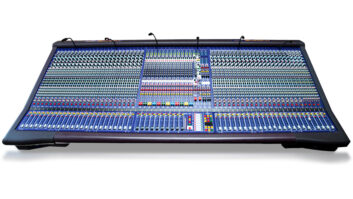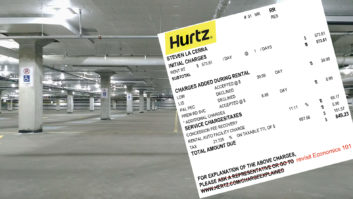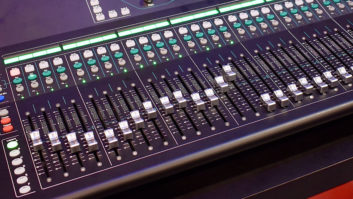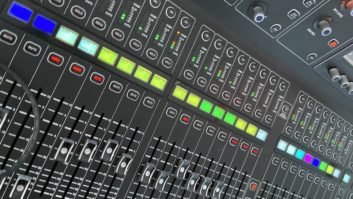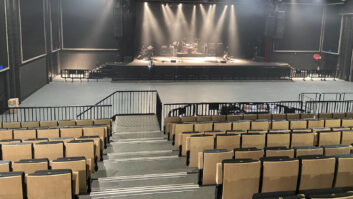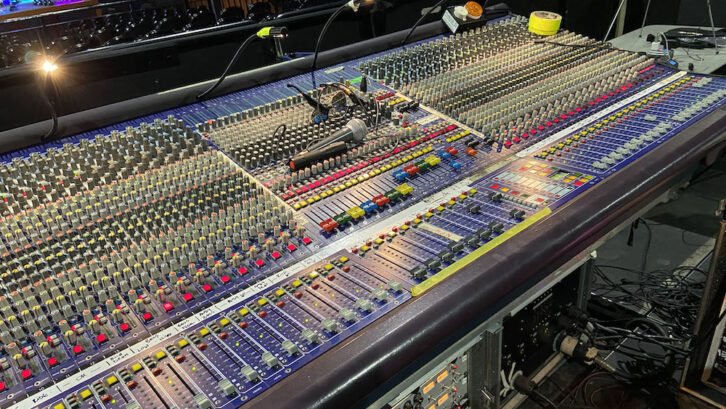
I’m happy to report that I survived the Stone Knives and Bearskins show, i.e., the one where I had to mix using an analog console. I’m also happy to report that the mixing desk — a Midas H3000 — was in pretty good working condition. It looked like hell, though. I’ll never understand why people who own expensive gear can’t take a clean paintbrush to it once a week to dust it off.
The only technical issue the desk had was one non-working VCA group, which was annoying due to the fact that it was VCA 5—smack in the middle of my VCA fader bank. When I sat behind the desk, I was quickly reminded of how easy it is to see every console setting without paging through menus, and how the controls are instantly accessible (taking a taxi to get from one end of the desk to the other notwithstanding!). Much to my surprise, I even remembered how to program the VCA and Mute groups.
The venue had plenty of outboard gear, all of which I needed and then some. There was a pair of Summit DCL200 tube compressors, which I used for lead vocals and bass, eight channels of Drawmer DS201 gates for drums, 12 channels of Drawmer DS241 comp/gates, two Yamaha SPX2000s, tc electronic D•Two and M2000, etc. I had to borrow another pair of DS241s from monitor world because I needed more compression at FOH, but the monitor engineer didn’t miss them because he had a digital desk. Hey, wait a minute… how come the monitor engineer gets a digital desk?
The H3000 sounded fine, but I didn’t exactly roll my eyes in ecstasy uttering, “Oooooh, analog audio…” What irked me about the setup was that the genius who installed the equipment placed much of the outboard gear in a rack underneath the console, where it was difficult to reach and impossible to see. The remainder of the outboard gear was in a rack to the right of the console, somewhere around knee-high. Really? Not once during the entire night was I able to adjust the outboard gear while hearing the result. Instead, I’d bend down, make a change, then get up to hear the difference. I’d gladly have sacrificed all that outboard analog processing for a screen, mouse and keyboard that I could actually see and adjust while listening to the mix. Mix positions designed by people who’ve never mixed a show in their lives—more than mildly annoying.
The other thing that complicated the day (and this was a day full of tour managing-related complications) was that, of course, I had to build the mix from scratch. We were under a time crunch to complete soundcheck before doors opened, and I had other TM tasks waiting, like counting in merch, submitting the guest list to the box office, dealing with settlement, and ensuring that all of the guests would be taken care of. It might also have been nice if I was able to eat dinner, but no such luck (we’ve all seen that movie).
It’s this type of situation where the deficiencies of working on an analog system rear their ugly heads. Analog gear is great if you have the time, and use the same gear on a consistent basis.
The situation reminded me of some of the early festival shows I mixed for Blue Öyster Cult in the 1990s, where “throw and go” really meant starting your show at zero on an analog desk. Nowadays, when we say “throw and go,” we’re still able to load a digital desk with a show file that has some sort of mix dialed into it, even when there’s no time for a soundcheck. I’ll take that over the good ol’ days of analog in a heartbeat.
